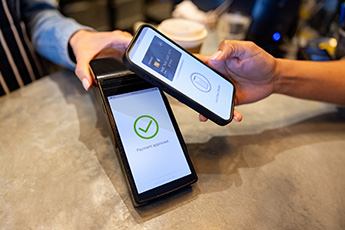For centuries, a physical ticket has been a symbol of access — from Roman pottery shards inscribed with seat numbers used to gain entry to the Colosseum to highly secure, QR code-powered entries for today’s major events as well as modes of transportation. The evolution of ticketing has always sought to balance convenience and security, whether through the introduction of barcodes, mobile ticketing, or near-field communication (NFC) technology. Each step represented a leap forward, offering better ways to validate access and improve the experience for both event organizers and attendees. The Federal Reserve’s cutover to ISO® 20022 for the Fedwire® Funds Service is a similar milestone for the world of payment messaging. After years of preparation, the July 14 transition date is final — and fast approaching.For community financial institutions (CFIs), much of the technical heavy lifting will fall to core providers. However, that doesn’t mean internal teams are off the hook. Operational readiness, data handling, and customer service processes may all need to shift to accommodate the new message format.ISO 20022 isn’t just a new file type — it’s a new language for payment messages. Compared to the legacy format (FAIM), ISO 20022 introduces a richer and more structured way to convey payment information. That structure has practical benefits:
- Fewer formatting issues. With standardized field requirements, common rejection errors can be avoided.
- More complete payment data. Financial institutions can access more detailed information about the purpose of the transaction and the parties involved.
- Improved compliance and exception handling. Better data means stronger screening capabilities and faster resolution of wire issues.
Many of these advantages won’t be immediately visible to end customers. Behind the scenes, though, the potential to improve operational workflows and reduce wire friction is significant — especially for institutions with strong internal coordination.What This Means for CFIsWhile most core systems are expected to handle the majority of the technical conversion, ISO 20022 will likely touch more areas than many institutions expect. Compliance tools, fraud detection systems, internal reports, data exports, and even customer instructions may need to be revisited.The Fed has emphasized that testing with live Fedwire messages is not possible prior to go-live. That increases the importance of dry runs and system validations, wherever possible. Tools, demos, and message previews from your provider can be useful for preparing staff to navigate what they’ll see on day one.Customer-facing impacts will vary. Many customers may notice little to no change — especially if their institution provides guided wire submission templates. Others may have questions, particularly if they use customized input files or interact directly with message formatting. Institutions can prepare by updating internal FAQs and ensuring front-line staff are ready to handle basic inquiries.The Global and Strategic ContextFedwire’s shift to ISO 20022 also brings the US into alignment with global payment infrastructure. SWIFT, CHIPS, and other international networks are already moving or have moved to ISO 20022, making this transition an important step toward long-term interoperability.For CFIs, this means more than just compliance. It’s an opportunity to modernize how payment data is handled — and to position systems and staff for an increasingly integrated payments environment. Many financial institutions view ISO 20022 as part of a broader push toward modernization, rather than simply a technical requirement.The enhanced message format may also support stronger customer relationships. With more detailed remittance and party information, institutions can provide faster exception handling, better reconciliation support, and more data-driven insights.
Resources to Support ReadinessTo help financial institutions navigate the transition, the Federal Reserve provides detailed guidance and timelines through its ISO 20022 Implementation Center. For institutions still aligning internal efforts, this is a good place to review FAQs, data requirements, and cutover expectations. PCBB has also developed a comprehensive checklist to help your internal stakeholders assess your readiness to support new ISO 20022 standards. For those evaluating how to turn the transition into a strategic advantage, this earlier article outlines ways to use the additional preparation time to strengthen data workflows and staff training. Other background information, including a foundational overview of ISO 20022 and an FAQ covering core implementation topics, can help inform readiness conversations across teams.Final ThoughtsWith the cutover just weeks away, CFIs should double-check readiness — not only with vendors, but internally. Use this time to identify any gaps, test what you can, and ensure teams are prepared. Institutions that approach this change thoughtfully will be in a strong position to benefit from it.
Resources to Support ReadinessTo help financial institutions navigate the transition, the Federal Reserve provides detailed guidance and timelines through its ISO 20022 Implementation Center. For institutions still aligning internal efforts, this is a good place to review FAQs, data requirements, and cutover expectations. PCBB has also developed a comprehensive checklist to help your internal stakeholders assess your readiness to support new ISO 20022 standards. For those evaluating how to turn the transition into a strategic advantage, this earlier article outlines ways to use the additional preparation time to strengthen data workflows and staff training. Other background information, including a foundational overview of ISO 20022 and an FAQ covering core implementation topics, can help inform readiness conversations across teams.Final ThoughtsWith the cutover just weeks away, CFIs should double-check readiness — not only with vendors, but internally. Use this time to identify any gaps, test what you can, and ensure teams are prepared. Institutions that approach this change thoughtfully will be in a strong position to benefit from it.




